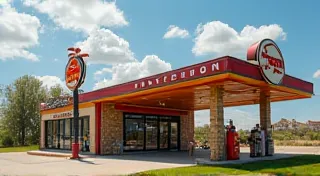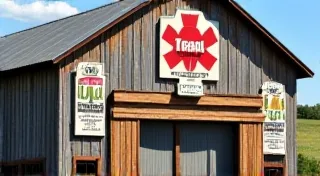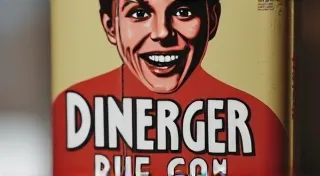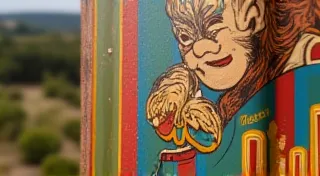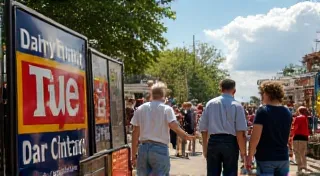The Rise of Neon: Advertising Signs That Glowed
The world of vintage advertising signs is rich with history and artistry, and few elements are as iconic as the vibrant glow of neon. Before dazzling digital displays, neon signage reigned supreme, transforming cityscapes and captivating consumers in a way few other forms of advertising could. This article explores the rise of neon in advertising signs and how its evolution intertwines with the broader story of collectible signs and antique advertising.
The Dawn of Electric Light and Advertising
While electric lighting existed before, the practical application of neon as an advertising medium truly began in the early 1920s. George Blackinton, an engineer at the French company Claude Neon, is credited with pioneering its use in the United States. Initially, neon signs were expensive and complex to produce, limiting them to larger businesses and major cities. Their initial impact was immediate – a vibrant, eye-catching alternative to traditional painted signs. The impact wasn’t limited to neon; businesses also utilized durable materials like porcelain enamel for their advertising, a legacy that continues to fascinate collectors today. You can learn more about the history of porcelain enamel signs and their vital role in the early advertising landscape.
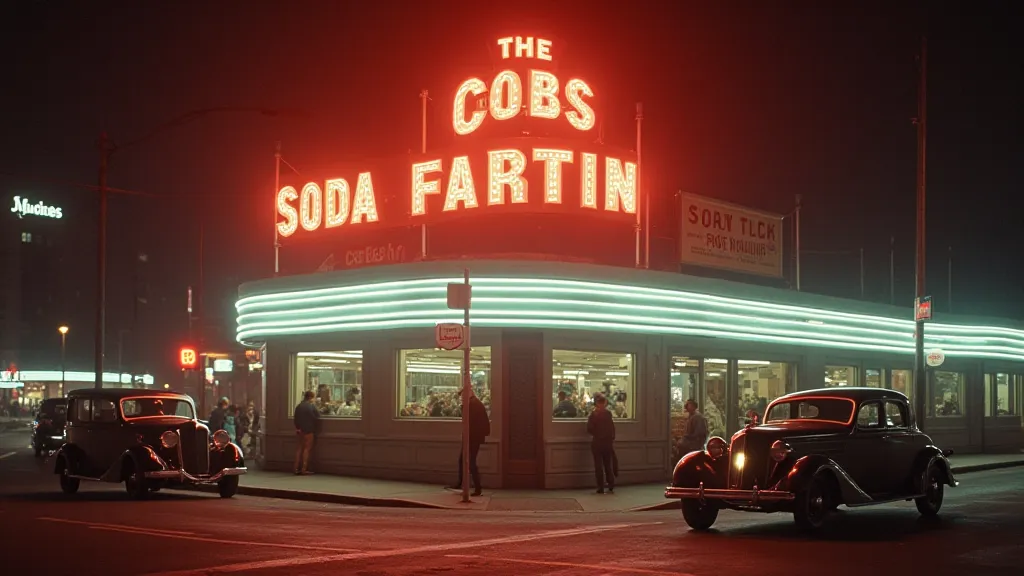
The Golden Age of Neon Signage
The 1930s and 1940s marked the golden age of neon advertising. Technological advancements made production more accessible, leading to an explosion of creativity and variety. Businesses clamored for neon signs to promote everything from gas stations and movie theaters to restaurants and department stores. The use of multiple colors, intricate designs, and animated elements became increasingly common. These signs weren't just functional; they were works of art, contributing significantly to the visual culture of the era.
The artistry of neon sign makers should not be understated. Skilled craftsmen bent and shaped glass tubes, meticulously layering colors and incorporating elaborate designs. They often collaborated with artists and graphic designers to create truly unique and memorable advertising pieces. Many of these original signs remain highly sought-after by collectors today. Beyond neon, many businesses turned to durable cast metal signs to reach their consumers, showcasing a diverse range of advertising approaches. The allure of these older methods continues to draw enthusiasts who appreciate the tangible connection to a specific time. Those interested in a broader perspective on vintage advertising should explore the world of cast metal signs and their enduring appeal. This era also saw a surge in advertisements targeted toward a burgeoning consumer market, offering not just products but entire experiences, a key element in shaping modern branding.
Neon's Impact on Sign Collecting & Antique Advertising
The legacy of neon advertising signs extends far beyond their initial purpose. Today, these signs are treasured as collectibles, representing a tangible link to a bygone era. Their distinctive glow and unique designs make them stand out from other forms of antique advertising. The stories embedded within these signs often represent entire eras of branding and consumerism, and provide a fascinating insight into forgotten companies and advertising strategies. Consider how brands told their stories back then, a practice that also manifested in carefully crafted enamel advertisements, leaving echoes of a bygone era. Those interested can delve deeper into echoes in enamel and the powerful narratives they convey. The fascination with these relics stems not just from their aesthetic value, but also from what they reveal about the societal context in which they were created – a window into the aspirations and desires of a different time.
Several factors contribute to the value of vintage neon signs:
- Rarity: Signs from specific brands or locations are more valuable.
- Condition: Signs in good working order and with original paint are highly prized.
- Design: Unique and eye-catching designs command higher prices.
- Historical Significance: Signs associated with significant events or companies often have increased value.
- Brand Recognition: Iconic brands often fetch higher prices due to their historical resonance and lasting appeal.
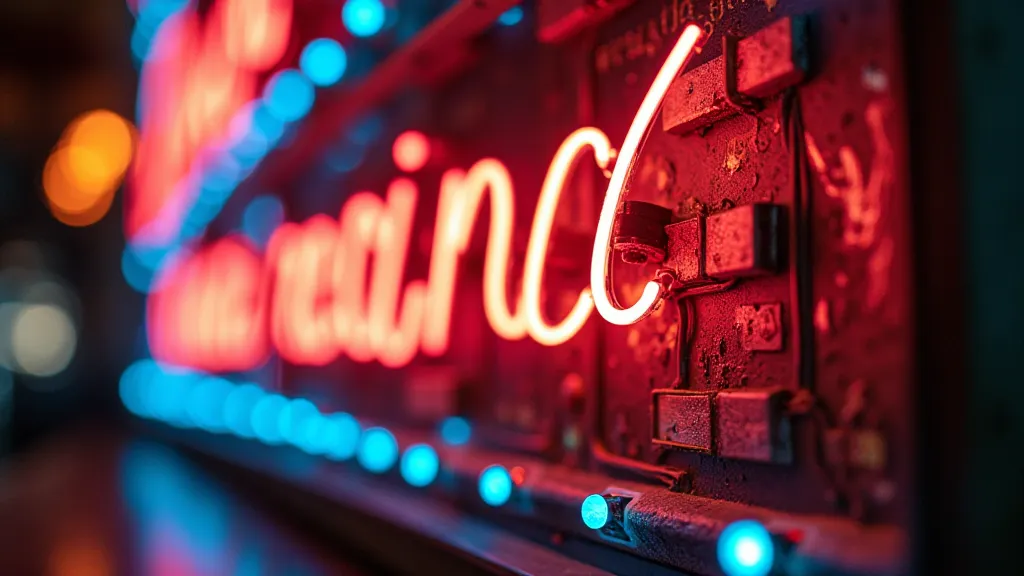
The Automotive Connection: A Brightly Lit Road
The rise of the automobile fundamentally changed the landscape of advertising, and neon signs were perfectly positioned to capitalize on this shift. Gas stations, car dealerships, and related businesses flocked to incorporate neon into their branding, creating brightly lit beacons along highways and city streets. The visual appeal of neon was particularly effective in attracting motorists, and the distinctive glow became synonymous with the excitement and promise of the open road. The era of automotive advertising signs truly represents a fascinating chapter in the history of American commerce, marked by innovation and bold visual statements. Collectors of vintage signs often focus on this period, recognizing the unique aesthetic and cultural significance of these automotive-themed displays. From gas pumps to dealerships, the glow of neon illuminated the path of progress. The era was one of unprecedented mobility and a hunger for new experiences, and advertising played a crucial role in fueling that desire.
Decline and Revival
The popularity of neon signs began to wane in the 1960s and 1970s, replaced by more economical and easily changeable fluorescent and LED signs. Many neon signs were dismantled and scrapped, lost to the ravages of time and changing consumer tastes. The shift to more readily available lighting technology reflected a broader trend towards mass production and standardization in the advertising industry. The distinctive artistry and craftsmanship that had once defined neon signage gradually faded into memory, replaced by the efficiency of digital displays. The simplicity of modern LED technology offered a level of flexibility that neon simply couldn's match, leading to its decline.
However, in recent decades, there has been a significant revival of interest in vintage neon signage. This resurgence can be attributed to a growing appreciation for the craftsmanship, artistry, and unique character of these iconic pieces. Collectors, enthusiasts, and even businesses are actively seeking out and restoring vintage neon signs, recognizing their cultural and historical value. The glow of neon continues to captivate, reminding us of a time when advertising was an art form. The renewed interest even extends to the flavors and experiences associated with earlier times, reminiscent of the advertisements for sweet treats that once beckoned customers.

Restoration and Preservation: Keeping the Glow Alive
The restoration of vintage neon signs is a complex and demanding process, requiring specialized skills and equipment. Often, the original glass tubes are fragile and damaged, and the electrical components are outdated and unreliable. Skilled artisans must carefully repair or replace these elements, ensuring that the sign's original design and functionality are faithfully reproduced. The process often involves painstaking research to identify the correct colors, fonts, and materials used in the sign’s original construction. This commitment to authenticity ensures that restored neon signs retain their historical integrity and continue to inspire awe and appreciation. The details often evoke a sense of nostalgia, drawing parallels with the fading beauty of things that were once vibrant and new.
Beyond restoration, there's also a growing emphasis on preservation. Recognizing the scarcity and value of these artifacts, organizations and individuals are working to document and protect neon signs from further deterioration. This involves careful maintenance, protective measures, and efforts to raise awareness about the importance of preserving this unique form of American heritage. The ongoing efforts to conserve vintage neon signs are a testament to the enduring power of these visual landmarks and their ability to evoke a sense of nostalgia and connection to the past. Even the remnants of faded signs, bearing the marks of time, can possess a haunting beauty, revealing the subversive beauty of faded signage.
The Future of Neon: A Legacy of Light
While digital displays continue to dominate the advertising landscape, vintage neon signs retain a unique appeal and continue to inspire creativity and innovation. Many contemporary designers are incorporating neon elements into their work, drawing inspiration from the artistry and visual impact of the classic signs. This blending of old and new demonstrates the enduring relevance of neon and its ability to transcend time and trends. As long as there is an appreciation for craftsmanship, artistry, and the stories that shape our culture, the glow of neon will continue to captivate and remind us of a bygone era. It’s a powerful reminder that true advertising isn't just about selling a product; it’s about creating an experience and evoking a feeling – something that vintage neon signage excelled at, and something that continues to inspire today.
